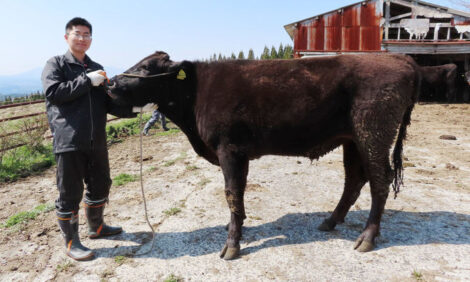



Blistering Australian Heat Leads to Grim Profit Predictions
AUSTRALIA – High input costs and drought induced slaughtering will leave Australian beef producers out of pocket at the end of the 2013-14 season, predicts the government.Queensland farmers are thought to be in for the biggest shock with average losses of A$77,000, according to a recent outlook report from government research bureau ABARES.
Consecutive seasons of drought have stretched pasture and forage, forcing farmers to liquidate heifers and cull stock early.
Cattle have been driven south from northern areas and herd liquidation has been forced in central and eastern Australia, leading to depressed cattle prices.
Saleyards have been reporting values around 18 per cent below the ten year average recently at A$290 cents/kilo dressed weight, the report added.
This has caused beef herd contraction of four per cent, with the national government prediction currently standing at 24.5 million head by July this year.
But ABARES said a quick recovery is possible, predicting the national herd to have grown to 27.7 million head by June 2019.
However, ABARES caveated that this hinges heavily on soil moisture levels recovering.
Without rain, high slaughter rates would mean no herd growth and continued depressed cattle prices.
In the event of sufficient rainfall, ABARES said: “Slaughter numbers for sheep and cattle could be lower than currently forecast for 2014–15 as herd and flock rebuilding commences sooner than expected.”
Autumn Brings Rain for Some
After a summer season of extreme heat, a band of rain has been welcomed by farmers in New South Wales (NSW) and Northern Queensland, bringing above average precipitation.
Meanwhile, South Australia (SA) and Western Australia (WA) remained dry with much of the region receiving no rain for March.
A Meat and Livestock Australia spokesman said: "In contrast and following ‘above average’ seasonal conditions in February, large areas of SA and WA received little to no rain during March, recording ‘below average’ to ‘very much below average’ rainfall.
“Similarly, after an ‘above average’ February, rain gauges in central and western Queensland remained dry, with the rest of the state and large areas of NT recording ‘average’ rainfall through March.”
However, the picture in southern Queensland has definitely improved.
“The first month of autumn brought welcome relief with ‘above average’ to ‘very much above average’ falls registered through NSW and southern Queensland,” said the spokesperson.
More Drought Help Arrives
Farmers in New South Wales will receive targeted drought assistance from three Rural Support Workers and an emergency fund worth A$14.6 million.
NSW Minister for Primary Industries, Katrina Hodgson, announced yesterday (1 April) the measures in addition to national aid made available at the end of February.
“The Rural Support Workers will help farming families, farming businesses and communities to develop skills, provide personal support and basic information to build resilience,” said Mrs Hodgkinson.
“Their extensive experience and expertise will ensure a proactive approach in assisting communities to deal with the drought by providing families with advice and access to services.”
Michael Priestley
News Team - Editor
Mainly production and market stories on ruminants sector. Works closely with sustainability consultants at FAI Farms



